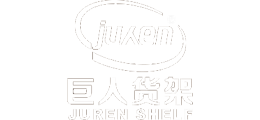

-
 National service hotline
National service hotline
- 400-082-1188
- How to adjust the temperature of the shelves in the fresh food area
- What are the layout techniques for steel and wood shelves
- What are the applications of steel and wood shelves in supermarkets
- How to design the open shelving system in the weighing area
- Why is the cash register in a convenience store important
Why do many people choose convenience store checkout counters
source:www.dzoneshop.com | Release time:2025年07月14日1. Adapt to convenience store space and optimize layout efficiency
Convenience stores usually have a small area (usually 50-150 square meters), and the checkout counter needs to balance the "collection core area" and "space utilization". Professional convenience store cash registers often adopt compact designs (generally 0.6-1.2m in width and 0.5-0.8m in depth), which can be embedded in limited space near the entrance and exit of the store. This not only avoids occupying too much display area, but also naturally forms a "shopping flow endpoint" to guide customers to checkout.
Some styles are "L-shaped" or "curved", which can fit against corners or passages, reducing space waste and making it convenient for cashiers to balance cash register and store management.
2. Integrate multiple functions to improve operational efficiency
Core functions of cash register: Reserved space for barcode scanners, cash registers, and cash boxes on the countertop, some with cable trays or hidden circuit designs to avoid messy wires and improve operational convenience.
Display value-added function: The countertop and multi-layer partitions below can display high gross margin small items (such as chewing gum, lighters, condoms, promotional snacks, etc.), using customer checkout waiting time to promote spontaneous consumption and increase store revenue.
Convenient service expansion: Space can be reserved below for storage cabinets, heating devices (such as hot drink machines), and convenient items (such as power banks and umbrella rentals) to enhance the service attributes of the store.
3. Balancing theft prevention and customer experience
The location is usually set at the entrance and exit of the store, and cashiers can monitor the entire area through the cashier's field of view, reducing the risk of product theft; Some styles come with baffles or semi enclosed designs, which not only protect customer payment privacy but also create a relatively independent operating area.
The height design conforms to ergonomics (the tabletop height is generally 0.9-1.1m), making it convenient for customers to place goods, scan QR codes for payment, and reducing the fatigue of cashiers during long periods of operation.
4. Durable material that meets the requirements of the scene
We often use wear-resistant and dirt resistant materials (such as fireproof board, stainless steel, high-density board), which can withstand frequent use and wiping (such as cleaning table stains and disinfecting), and are suitable for the high foot traffic and frequent operation environment of convenience stores.
The surface is easy to clean and meets the hygiene requirements of food products (such as some convenience stores selling cooked food and snacks, avoiding countertop contamination).

 Micro signal:
Micro signal:
 official account
official account
 applet
applet
 wechat
wechat
 contact
contact
 phone
phone